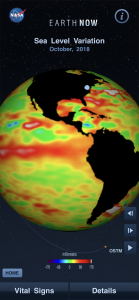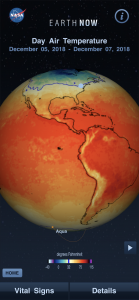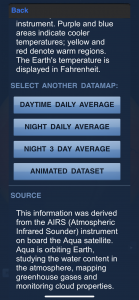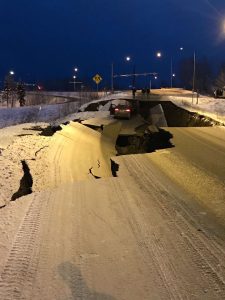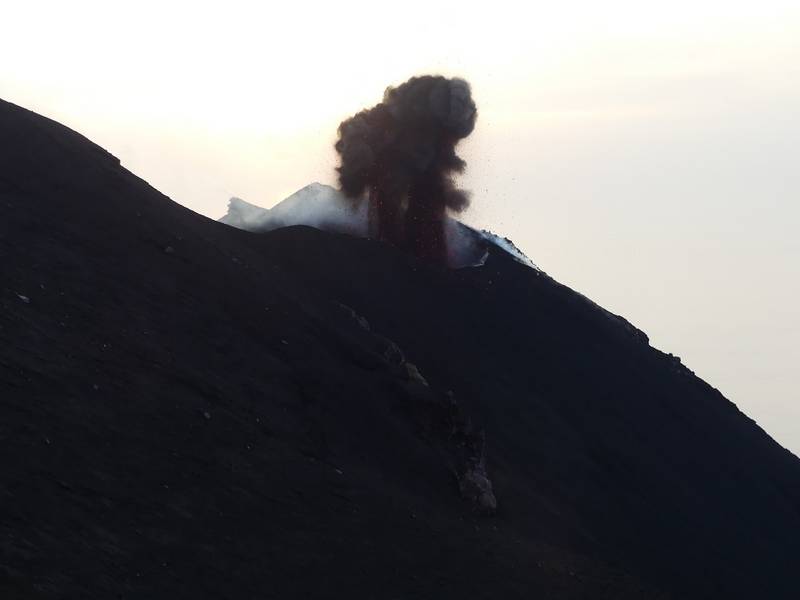Looking online at NASA’s website, I saw that they released an app called Earth Now. I was interested and downloaded the app (its free). Earth Now shows you recent global climate data from Earth Science satellites. You can choose to see different elements including surface air temperature, carbon dioxide, carbon monoxide, ozone, water vapor, and gravity and sea level variations. The 3D model of Earth will show a color-coded visualization of the relative strength or weakness of an environmental condition. The app tells you the latest events going on around the world as well. It is real time and will show the most up to date data that it has. You can also go back in time to see how the environmental conditions have changed. This is a really great app because it allows you to stay up to date by checking on your phone (especially when everyone seems to be on their phones these days). This is app is very beneficial because it is an easy way for people to stay up to date and informed about the current environmental conditions of our Earth.
I have posted screenshots from my phone of Sea Level Variation and Day Air Temperature. The third photo shows the Earth when you open the app, and it has its latest event: Phytoplankton bloom off South Africa. It also provides further information about each environmental condition and other options for viewing the data.

